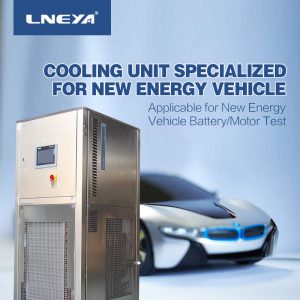Heating and cooling system for chemical reaction kettle reaction process
In the process of chemical chemical reaction, material temperature is an important production process parameter. For example, in salt crystallization, solution separation, organic pigment and intermediate processing, temperature control is particularly important. In order to achieve this goal, the reaction kettle is directly refrigerated and cooled, so as to achieve the purpose of indirectly reducing the temperature of the materials in the reaction kettle. For this reason, it is urgent to adopt suitable refrigeration equipment to lower the temperature of the reactor.

The heating and cooling system in the reaction process of the reactor is mainly used for cooling and cooling of the chemical reactor (chemical heat exchanger), and timely takes away the huge heat generated by the chemical reaction to achieve the purpose of cooling (cooling) and improve the quality of the product. The main heating and cooling system of the reactor reaction process is also called the chemical water chiller and the reactor water chiller, which are widely used in chemical and pharmaceutical industries.
In chemical production, because of the large refrigeration capacity, some tens of thousands of kcal per hour, there is a large demand for low-temperature refrigeration. The rate of most chemical exothermic reactions in the reactor cooling system will increase with increasing temperature and decrease with decreasing temperature. If the reaction temperature is lowered, the reaction will slow down, and the unreacted materials may accumulate in the reactor.
During the reaction, the temperature rises again, and the unreacted materials may start to react. If there are enough unreacted materials, the heat released by the reaction may exceed the cooling capacity of the reactor. In the selection of chiller equipment, chemical industry practitioners should pay special attention, otherwise it will cause refrigeration mismatch, high energy consumption, and even product quality problems, affect normal production, and increase enterprise operating costs.
Different types of production require different temperature conditions for the reactor to cool down. LNEYA provides room temperature reactor cooling, medium temperature reactor cooling, low temperature reactor cooling, cryogenic reactor cooling, etc., heating and cooling systems and temperature solutions for the reactor reaction process at various temperatures.
Recommandations connexes
-
483Meet Your Dream Equipment for Distillate CBD Extraction
1273If you need equipment to distill CBD, you need to scrutinize your choices, as the equipment can vary in its features and design. When you use equipment that produces a CBD distillate, you want to seek out a system made by a manufacturer that provi...
Voir les détails -
Introduction To The Preparation Of Low Temperature Chiller’ Operation
1277Why do low temperature chiller need to be ready for operation? We must be very clear that only when we are ready to check the low temperature chiller can we run the equipment better, can we run it more efficiently. Before running the low temperatu...
Voir les détails -
Contrôle de la température et refroidisseurs dans le processus d'oxydation-diffusion
752Le processus d'oxydation-diffusion est une étape clé dans la fabrication des semi-conducteurs. Il est principalement utilisé pour former des couches d'oxyde et de dopage précises et répond à des exigences extrêmement strictes en matière de contrôle de la température. Dans ce processus, le refroidisseur, en tant que...
Voir les détails -
Motor test bench environmental cabin option for new energy vehicles
961Passenger car motor and commercial vehicle motor test bench can complete the stall torque and locked rotor current test, temperature rise test, continuous electric working characteristic test, motor maximum speed test, motor over speed test and fe...
Voir les détails
 LNEYA Industrial Chillers Fabricant Fournisseur
LNEYA Industrial Chillers Fabricant Fournisseur











